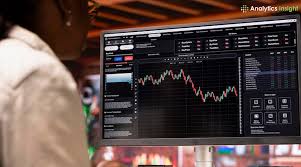The Future of Live Trading Crypto Strategies, Tools, and Insights

The Future of Live Trading Crypto
In recent years, the cryptocurrency market has exploded in popularity, attracting both seasoned traders and newcomers alike. Among the various trading methods available, live trading crypto has emerged as one of the most dynamic and engaging options for those looking to capitalize on the rapid price movements associated with digital assets. In this article, we will explore the essential strategies, tools, and insights for effective live trading in the volatile world of cryptocurrency. For those looking to deepen their research into market trends, you may find this resource helpful: live trading crypto https://site.financialmodelingprep.com/profile/ACEV.
Understanding Live Trading Crypto
Live trading, often referred to as day trading or real-time trading, involves executing trades based on real-time market data. Unlike traditional investing, which may focus on long-term gains, live trading crypto capitalizes on the short-term volatility of cryptocurrency prices. This requires traders to stay alert and ready to take advantage of price swings that can occur within minutes or even seconds.
The Importance of Market Analysis
To be successful in live trading crypto, one must engage in thorough market analysis. There are two primary types of analysis that traders typically use: technical analysis and fundamental analysis.
1. Technical Analysis
Technical analysis involves examining historical price data, chart patterns, and various indicators to forecast future price movements. Common tools used in technical analysis include moving averages, Bollinger Bands, Relative Strength Index (RSI), and candlestick patterns. Understanding these tools can help traders make informed decisions during live trading sessions.
2. Fundamental Analysis
Fundamental analysis focuses on the underlying value of a cryptocurrency by assessing its technology, use cases, team, market capitalization, and recent news events. This type of analysis helps traders understand whether a cryptocurrency is overvalued or undervalued, providing context for their trading decisions.
Choosing the Right Trading Platform
Selecting a reliable trading platform is crucial for live trading success. Traders should consider factors such as trading fees, available trading pairs, user interface, security features, and customer support. Popular platforms for live trading crypto include Binance, Coinbase Pro, Kraken, and Bitfinex, each offering unique features tailored to different trading styles.
Key Features to Look For
When choosing a platform, look for real-time market data, charting tools, risk management features (like stop-loss orders), and a robust mobile app for on-the-go trading. Additionally, ensuring that the platform has a solid reputation for security will provide peace of mind as you engage in live trading.
Developing a Trading Strategy
A well-defined trading strategy is essential for success in live trading crypto. Here are some popular strategies to consider:
1. Scalping

Scalping involves making numerous small trades throughout the day to accumulate small profits. This strategy is ideal for traders who can dedicate significant time to monitoring the market and executing trades quickly.
2. Swing Trading
Swing trading focuses on capturing larger price movements over several days or weeks. Traders using this strategy often rely on technical analysis to identify entry and exit points. This method requires less time commitment than scalping while still allowing for profitable trades.
3. Trend Following
This strategy involves identifying and capitalizing on existing market trends. Traders look for upward or downward trends and establish positions to ride the wave. Trend-following strategies may use technical indicators to identify when to enter or exit trades.
Risk Management in Live Trading
In a market as volatile as cryptocurrency, effective risk management is paramount. Here are some tips to help mitigate risks:
1. Set Stop-Loss Orders
A stop-loss order automatically sells a cryptocurrency when its price falls below a certain level. This can limit potential losses and protect your capital.
2. Diversify Your Portfolio
Rather than putting all your funds into one cryptocurrency, consider diversifying your portfolio across multiple assets. This can help spread risk and reduce the impact of a single asset’s poor performance on your overall portfolio.
3. Use Proper Position Sizing
Determine how much of your total capital to risk on each trade. A common rule of thumb is to risk no more than 1% to 2% of your total trading capital on a single trade. This strategy helps prevent significant losses and preserves capital for future trades.
Staying Informed and Continuous Learning
The cryptocurrency market is constantly evolving, and staying informed is crucial for live trading success. Engage with the crypto community, follow reputable news sources, and participate in educational webinars and seminars to stay abreast of market shifts, regulatory changes, and new technological developments.
Conclusion
Live trading crypto offers an exciting opportunity for traders looking to engage with a rapidly changing market. By leveraging market analysis, selecting the right platform, developing a solid trading strategy, and practicing effective risk management, traders can navigate the complexities of live trading. As with all trading endeavors, continuous learning and adaptation are key to long-term success in this vibrant market.
